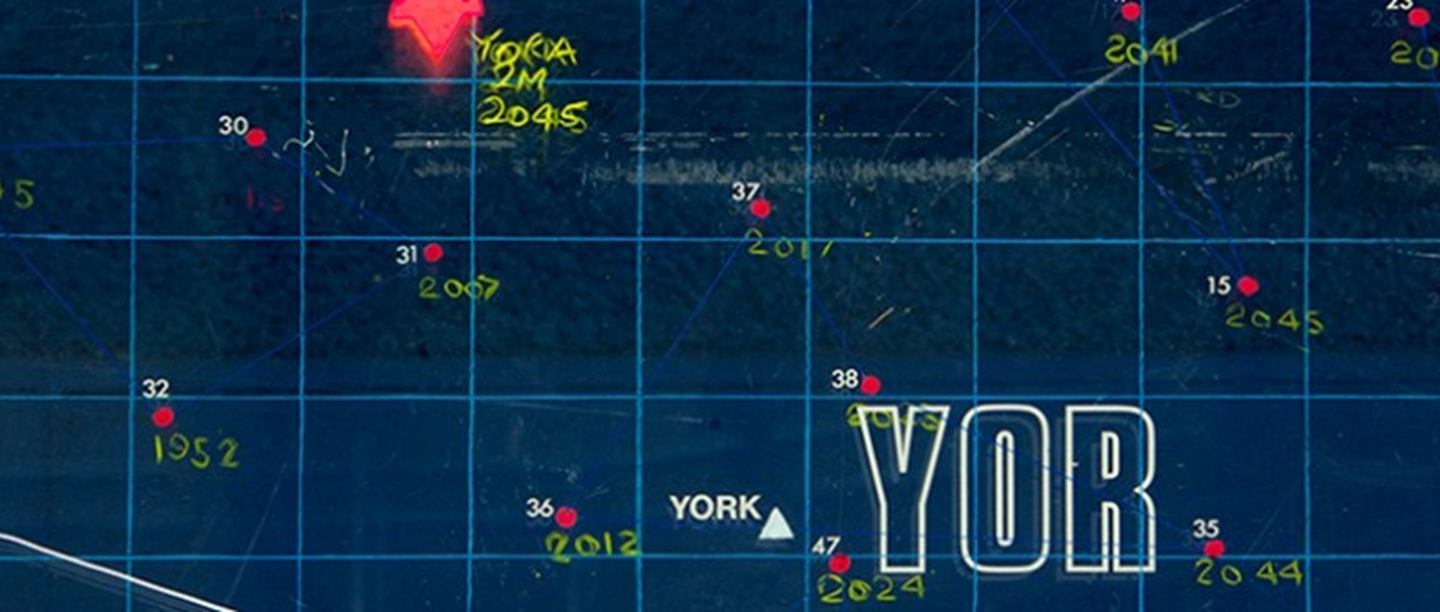
Seventy years ago the Trinity weapon test set into motion a series of events which made York Cold War Bunker necessary. In this post, Rachael Bowers, the Site Manager in York, explores the events of 1945 and how this prompted governments to invest in nuclear bunkers.
On the 16 July 1945 a 20 kiloton nuclear weapon codenamed ‘Trinity’ was detonated in the desert in New Mexico. It is difficult to imagine the powerful effects of nuclear explosions, but they are measured by comparison to the equivalent amount of conventional explosives: to equal the effects of Trinity you would need 20 thousand tons of TNT. The heat of the Trinity explosion turned the desert floor to green glass, and the blast wave ripped a crater 1.5 metres deep and over 9 metres wide. The shock wave was so great it could be felt over 100 miles away, but its implications would reach far further.
Trinity explosion at 0.025s
Following the use of Trinity, and fearing that thousands of American soldiers’ lives would be lost fighting against an enemy who would never give up, a calculated decision was made to use this ultimate weapon to end the war. On the 6 August 1945 an American B-52 bomber dropped a 15 kiloton bomb named ‘Little Boy’ onto the Japanese city of Hiroshima. Three days later, a larger 21 kiloton bomb was dropped on Nagasaki. Hundreds of thousands of people were killed, buildings were flattened and survivors were physically and emotionally scarred.
On the 15 August 1945 the Japanese surrendered, ending the war in the Pacific.
In the years that followed, America, Britain, Russia and France continued their nuclear weapons development research. The Soviets’ first nuclear test took place in 1949, and measured 21 kilotons. ‘Operation Hurricane’, the first independent British nuclear weapon was tested in Australia in 1952. Against this background of nuclear tests, tensions increased between communist Russia and capitalist Britain and America. It seemed possible, if not inevitable, that if World War Three came it would be fought using nuclear weapons.
This heightened threat combined with a greater understanding of nuclear weapons led governments to establish elaborate precautions. In 1957 the United Kingdom Warning and Monitoring Organisation was set up by the Home Office to provide data in the event of a nuclear attack. Over 1600 small bunkers were constructed across the UK, where volunteers could shelter and record the size and location of a nuclear explosion, and monitor the radioactive fallout. This information would then be passed to a regional headquarters, where staff could track the effects of each explosion across a large region and predict how this would harm the civilian population.
York Cold War Bunker
In December 1961 a regional headquarters was opened in York. Capable of supporting 60 volunteers for 30 days in a nuclear attack, the semi-subterranean bunker could survive a 2 megaton nuclear bomb landing 8 miles away. Less than two months previously the Russians had detonated the 50 megaton Tsar Bomba, so it must have felt very real for the staff who volunteered to work here! Although it was thankfully never used during a real nuclear attack it was still operational until 1991.
York Cold War Bunker shall be exploring how the events of 1945 created a culture of paranoia, prompting governments around the world to invest in nuclear weapons and nuclear bunkers for defence. A series of film screenings held underground will explore the issues raised by nuclear weapons. Stepping inside this Twentieth century monument you can get a sense of how difficult life could have been during a nuclear attack, something which we should remember today.